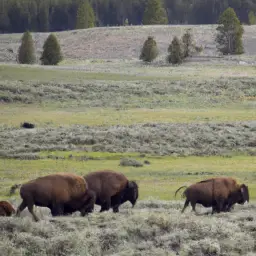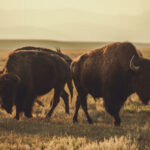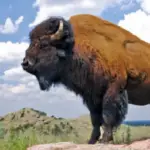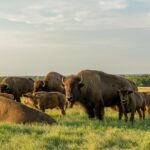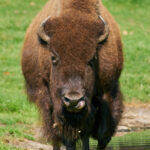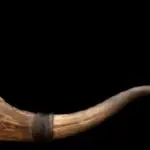Have you ever wondered about the astonishing number of bison that roam freely in the majestic lands of Yellowstone National Park? Look no further, as the “How Many Bison In Yellowstone” is here to provide you with all the fascinating details you’ve been craving. Discover the awe-inspiring population of these magnificent creatures and uncover the secrets behind these iconic animals. Prepare to be amazed by the remarkable facts and figures that make Yellowstone’s bison population truly extraordinary.
Historical Numbers of Bison in Yellowstone
Before the 1900s
Before the 1900s, Yellowstone National Park was home to tens of thousands of bison, making it one of the largest remaining wild bison populations in North America. These magnificent creatures roamed the vast grasslands and provided sustenance and cultural significance to the native tribes. However, unregulated hunting and commercial exploitation of bison led to a rapid decline in their numbers. By the late 1800s, only a few hundred bison were left in Yellowstone, on the brink of extinction.
Bison reduction programs in the 20th Century
In the early 20th century, efforts were made to reduce the bison population in Yellowstone due to concerns about the spread of diseases and competition for resources with livestock. During this period, tens of thousands of bison were needlessly culled or captured and relocated, resulting in a significant decline in their numbers. These reduction programs aimed to control the bison population but had devastating consequences for the species.
Bison reintroduction efforts
To rectify the historical decline in the bison population, reintroduction efforts began in the 1960s. Yellowstone National Park played a crucial role in these efforts by capturing and relocating bison from other areas to supplement the existing population. These reintroductions aimed to restore the ecological balance and preserve the cultural and historical significance of bison in the park. Over the years, these efforts have been successful in increasing the bison population and ensuring its long-term survival.
Current Bison Population in Yellowstone
Recent official estimates
According to recent official estimates by the National Park Service, the bison population in Yellowstone is approximately 4,900 individuals. This is a significant increase from the conservation efforts in the past decades and represents a substantial recovery for the species. The monitoring and research conducted by park officials provide invaluable data for understanding the dynamics of the population and implementing effective conservation strategies.
Differences in numbers throughout the year
The bison population in Yellowstone experiences fluctuations throughout the year due to various factors such as migration, breeding season, and natural mortality. During the summer, the population tends to be higher as bison move to higher elevations to graze on lush vegetation. In the winter, many bison migrate to lower elevations to access food, resulting in a decline in numbers in the park. These seasonal variations should be considered when analyzing population trends.
Methods of population count
To estimate the bison population in Yellowstone, park officials employ various methods, including ground surveys, aerial surveys, and remote sensing techniques. Ground surveys involve counting bison from the ground, which can be time-consuming but provide accurate data. Aerial surveys are conducted from helicopters or fixed-wing aircraft to cover larger areas quickly. Remote sensing techniques, such as satellite imagery, assist in detecting bison in inaccessible or remote areas. These methods are combined and cross-checked to ensure the accuracy of population estimates.
Factors Influencing Bison Population
Natural predators
In Yellowstone, the primary natural predator of bison is the gray wolf. The presence of wolves has a significant impact on the population dynamics of bison, as they selectively prey on weaker and vulnerable individuals. This predation helps maintain a healthy population by removing diseased and genetically inferior bison, ensuring the overall vitality of the species.
Human intervention
Human intervention, both historical and contemporary, has played a significant role in shaping the bison population in Yellowstone. The unregulated hunting and overexploitation of bison in the past drastically reduced their numbers. Today, human management practices such as culling, relocation, and contraception programs aim to regulate the population size and prevent negative impacts on the ecosystem and surrounding communities.
Impact of disease on population
Diseases, such as brucellosis and chronic wasting disease (CWD), pose a potential threat to the bison population in Yellowstone. Brucellosis, a bacterial infection, can cause abortion in bison and has led to controversial management strategies to prevent the transmission of the disease to livestock. CWD, a prion disease, affects primarily deer and elk but can also infect bison. Monitoring and managing these diseases are crucial for the long-term sustainability of the bison population.
Food and resource availability
The availability of food and other resources significantly influences the population size and distribution of bison in Yellowstone. Changes in vegetation composition and abundance can impact the carrying capacity of the ecosystem and, subsequently, the bison population. Drought, extreme weather events, and wildfires can lead to fluctuations in food availability, forcing bison to adapt their movements and potentially affecting population numbers.
Bison Migration Patterns
Seasonal movements
Bison in Yellowstone exhibit seasonal migration patterns in response to changing environmental conditions. During the winter months, deep snow and limited forage availability prompt many bison to migrate from higher to lower elevations. This movement allows them to access areas with less snow cover and find sufficient food resources. In the spring and summer, bison migrate back to higher elevations as the snow melts and nutrient-rich vegetation becomes abundant.
Impact on population counts
Bison migrations can significantly impact population counts in Yellowstone. During the winter migration, some bison move beyond the boundaries of the park into neighboring areas, making accurate population assessments challenging. Additionally, the timing and extent of migration can vary from year to year, affecting population estimates. These movements highlight the need for adaptive management strategies that consider the dynamic nature of bison populations.
Use of radio collar tracking for data
To gain insights into bison migration patterns, researchers in Yellowstone have utilized radio collar tracking technology. By fitting a subset of bison with radio collars, scientists can monitor their movements and behavior. This data helps inform population estimates, migration routes, and habitat preferences. The knowledge gained from these studies contributes to the effective management of bison and the preservation of their migratory behaviors.
Bison Management in Yellowstone
Role of the National Park Service
The National Park Service (NPS) plays a crucial role in the management of bison in Yellowstone. NPS oversees the protection, conservation, and restoration of bison populations within the park boundaries. They implement management strategies and work with scientific experts, stakeholders, and neighboring communities to ensure the long-term sustainability of the bison population while maintaining ecological integrity and public safety.
Management strategies
Bison management in Yellowstone involves a combination of methods to address population control, disease prevention, and habitat maintenance. These strategies include culling of excess individuals, relocation to other areas, contraception programs, and monitoring of disease prevalence. By carefully balancing these approaches, the NPS aims to maintain a healthy and genetically diverse bison population that contributes to the overall ecosystem health.
Controversies and challenges
Bison management in Yellowstone is not without controversy and challenges. Disagreements arise between different stakeholders regarding population control methods, boundary management, and disease management. The potential transmission of brucellosis to livestock is a particularly contentious issue, and discussions about coexistence between bison and cattle continue among local communities and management agencies. Balancing the diverse interests while ensuring the long-term survival of the bison population presents ongoing challenges.
Impact of Bison on Yellowstone Ecosystem
Bison’s role in the food chain
Bison play a crucial role in the Yellowstone ecosystem as a keystone species. Their grazing behavior helps shape the vegetation composition and architecture, creating a diverse habitat that benefits numerous plant and animal species. Additionally, bison carcasses provide a valuable food source for scavengers and decomposers, contributing to nutrient cycling and supporting a complex web of life.
Influence on plant life
The grazing habits of bison have a profound influence on plant life in Yellowstone. Their selective grazing promotes the growth and diversity of grasslands, stimulates plant growth through nutrient cycling, and controls the spread of woody encroachment. Through their feeding patterns and trampling, bison create distinct landscapes that benefit other herbivores and create patchy habitats essential for numerous plant species.
Interactions with other wildlife
Bison’s presence in Yellowstone has a positive impact on the overall biodiversity of the park. Their grazing activities create open grasslands and meadows, allowing other wildlife species such as elk, pronghorn, and birds to thrive. Bison also contribute to the creation of wallows or mud pits, which serve as crucial microhabitats for a variety of invertebrates and amphibians. The interactions between bison and other wildlife in Yellowstone enhance the ecological richness of the park.
Human-Bison Interactions in Yellowstone
Visitor viewing opportunities
Yellowstone National Park offers unique opportunities for visitors to observe and appreciate wild bison. Designated viewing areas and scenic drives provide excellent vantage points for visitors to safely observe these iconic animals in their natural habitat. Park rangers and interpretive programs offer educational opportunities to learn about the cultural and ecological significance of bison in Yellowstone.
Safety precautions and incidents
It is essential for visitors to understand the potential risks associated with encountering bison in Yellowstone. Despite their docile appearance, bison are wild animals and can be unpredictable and dangerous, especially during the breeding season or if feeling threatened. Park regulations require visitors to maintain a safe distance from bison and avoid any actions that may provoke them. Incidents involving visitors and bison can occur when safety precautions are not followed, underscoring the need for visitor education.
Economic contribution to Yellowstone tourism
The presence of bison in Yellowstone has significant economic benefits for the surrounding communities and the overall tourism industry. Bison viewing opportunities attract millions of visitors each year, contributing to local businesses and providing employment opportunities. The appreciation of bison as a cultural and natural heritage icon also fosters a deeper connection between visitors and the park, further enhancing the economic value of bison conservation efforts.
Bison Conservation Efforts
Conservation organizations
Numerous conservation organizations and non-profit groups are dedicated to the preservation and restoration of bison populations, including those in Yellowstone. These organizations work in collaboration with government agencies, landowners, and local communities to implement sustainable management practices, raise public awareness, and support scientific research. Their efforts help secure the future of bison and promote their ecological and cultural importance.
Participation by local and indigenous communities
The participation and inclusion of local and indigenous communities in bison conservation efforts are essential for successful outcomes. Native tribes have a deep cultural connection to bison and have been actively involved in the restoration of bison populations in Yellowstone and other areas. Their traditional ecological knowledge and stewardship play a crucial role in shaping conservation strategies that respect the spiritual and cultural significance of bison.
Successful conservation stories
The conservation efforts focused on bison in Yellowstone serve as a remarkable success story. From the brink of extinction, the population has rebounded significantly due to rigorous management practices, habitat restoration, and public support. The recovery of the Yellowstone bison population showcases the resiliency of nature and the effectiveness of conservation strategies when implemented with dedication and collaboration.
Future Projections for Bison Population
Projected population growth or decline
With the continued efforts in bison conservation, it is projected that the Yellowstone bison population will remain stable or experience modest growth in the future. Proper management practices, including population control measures and disease prevention, are essential in maintaining population size and ecological balance. However, external factors such as habitat degradation, climate change, and potential disease outbreaks might pose challenges to the population’s growth.
Potential threats to future population
While the Yellowstone bison population has made a remarkable recovery, several potential threats need to be addressed to ensure its future viability. Habitat loss and fragmentation due to human activities, competition for resources with livestock, and the spread of wildlife diseases continue to pose challenges. Climate change may also alter the availability and quality of food resources, affecting the bison population dynamics. Vigilant monitoring, adaptive management strategies, and public participation will be crucial in mitigating these threats.
Plans for ongoing conservation
To ensure the long-term conservation of bison in Yellowstone, ongoing efforts will focus on adaptive management, scientific research, and public engagement. The National Park Service will continue monitoring population trends, migration patterns, and disease prevalence to inform management decisions. Collaborative partnerships with local communities, conservation organizations, and indigenous groups will be strengthened to promote sustainable conservation practices and preserve the cultural and ecological significance of bison in the park.
What is the current population of bison in Yellowstone?
The number of bison in Yellowstone National Park is estimated to be around 4,900 individuals. This iconic species has made a remarkable recovery since facing extinction in the late 1800s. Today, efforts are made to manage the bison population to maintain a healthy balance within the park.
Interesting Facts About Yellowstone Bison
Unique characteristics
Yellowstone bison, also known as American buffalo, are the largest land mammals in North America. They can reach lengths of up to 10 feet and weigh over a ton. Despite their massive size, bison are agile and can run at speeds up to 35 miles per hour. The distinctive hump on their upper shoulders consists of powerful muscles that assist in enabling their characteristic head swings.
Myths and misconceptions
There are several myths and misconceptions surrounding bison. Contrary to popular belief, bison are not prone to aggression unless provoked. They prefer to live in large herds, which provide protection against predators. Additionally, bison do not have a true hump on their back; rather, it is a prominent shoulder hump. Recognizing these myths and understanding the true nature of bison is essential for proper management and appreciation of these magnificent animals.
Fun facts about the Yellowstone bison population
Did you know that bison can endure harsh winter conditions by using their massive heads to sweep off snow in search of forage? Additionally, Yellowstone National Park is the only place in the United States where bison have continuously lived since prehistoric times. The park’s bison population has genetic purity, meaning they have not hybridized with cattle or other domesticated species. These fun facts highlight the unique adaptations and historical significance of the Yellowstone bison population.

